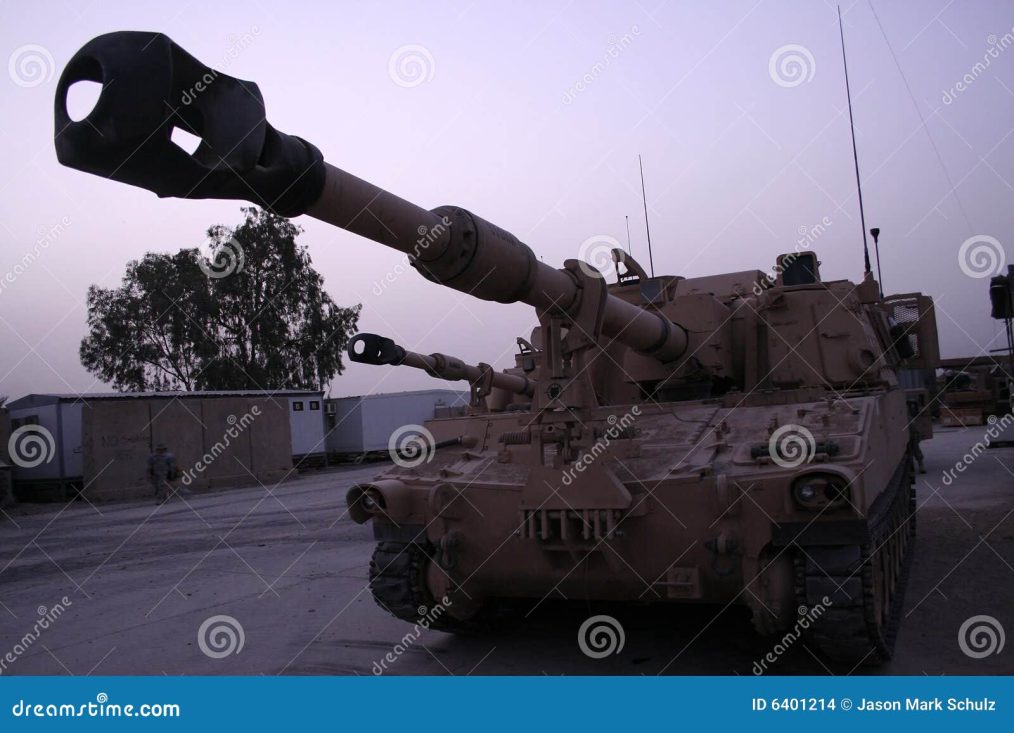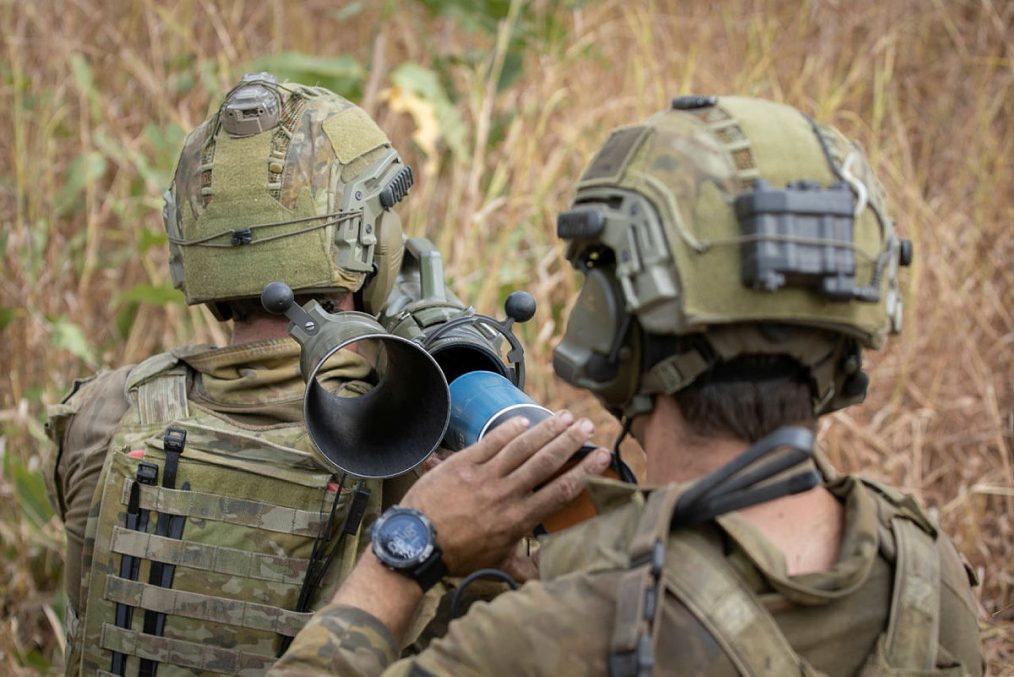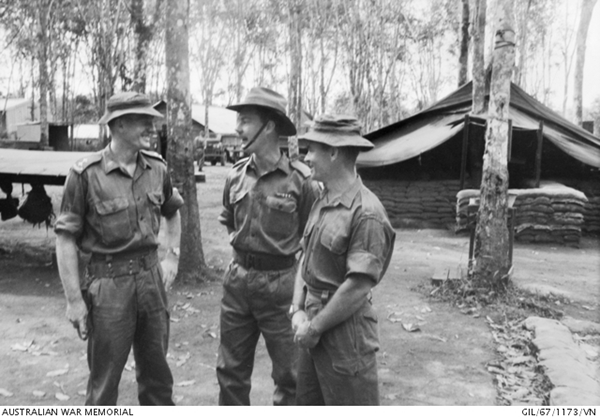The Taliban has introduced new draconian laws in Afghanistan that further restrict women’s already limited freedoms. These regulations, sanctioned by the Taliban’s supreme leader, Hibatullah Akhundzada, are part of the group’s broader agenda to impose their rigid interpretation of Islamic law. While the world is familiar with the Taliban’s oppressive stance on women’s rights, these new laws are particularly chilling, as they extend their control to every aspect of women’s public and private lives.
Under these new laws, Afghan women face even more stringent restrictions on their public appearances:
- Mandatory Veiling: Women are now required to cover their faces entirely when in public. The Taliban’s dress code mandates that women wear loose, non-revealing clothing, leaving no room for personal choice or expression.
- Segregation and Isolation: Women are forbidden from looking at men who are not their close relatives, further isolating them from the broader society. This ban not only curtails women’s freedom of movement but also reinforces their invisibility in public life.
- Silencing Voices: In a shocking move, the Taliban has also banned women from singing or even speaking aloud in public spaces. This silencing is symbolic of the broader efforts to erase women’s presence and participation in Afghan society.
The new laws extend beyond clothing and appearance, infiltrating various aspects of daily life:
- Public Silence: Women’s voices have been effectively erased from public life. Whether through singing, speaking, or any other form of vocal expression, women are barred from being heard.
- Personal Grooming: The Taliban’s control extends to personal grooming practices, with regulations governing how women and even men present themselves, including restrictions on shaving and other forms of grooming.
These new laws are not an isolated development but rather a continuation of the Taliban’s long-standing history of oppressing women:
- Global Condemnation: In July 2024, the United Nations released a report accusing the Taliban of numerous human rights violations, particularly targeting women and girls. The report highlighted the deteriorating situation in Afghanistan, where women’s rights have been systematically dismantled since the Taliban’s return to power.
- Taliban’s Response: Despite global outrage, the Taliban dismissed the UN’s findings, insisting that their actions are in line with their interpretation of Islamic principles. The group’s control has only tightened since the United States withdrew its forces from Afghanistan in 2021, leading to a rapid erosion of women’s rights and freedoms.
The Taliban’s new laws represent a further tightening of their oppressive grip on Afghan women’s lives. By enforcing such extreme measures, they are not just controlling women’s bodies but are also attempting to silence their voices and erase their existence from the public sphere. This latest wave of restrictions underscores the need for continued international attention and action to support the women of Afghanistan, who remain resilient in the face of relentless repression.
RAAF News
Royal Australian Air Force (RAAF) Wing Commander (WGCDR) Phil Parsons has become the first non-Boeing pilot to complete training on the MQ-28A Ghost Bat, an uncrewed teaming aircraft developed by Boeing. WGCDR Parsons, who has a decade of experience as a remote systems pilot, finished the comprehensive training program on 13 June.
The training included extensive sessions where WGCDR Parsons observed and monitored the Ghost Bat as it executed various commands, such as climbing and descending, accelerating and decelerating, and navigating to specific waypoints. These operations were part of the ongoing advanced testing program, which aims to push the limits of the aircraft’s capabilities.
In his role as a launch and recovery operator, WGCDR Parsons will oversee the crucial stages of the aircraft’s operation, including ground preparation, take-off, and landing procedures. This role is vital to ensuring the aircraft’s safe and efficient operation during missions. Glen Ferguson, Boeing Defence Australia’s MQ-28 program director, emphasized the importance of this role, stating, “On completion of the mission, the aircraft would be handed back to the launch and recovery operator to oversee landing, deceleration, and complete stop of the vehicle.”
The MQ-28A Ghost Bat, previously known as the Airpower Teaming System, represents a significant leap in uncrewed aircraft technology. It is designed to function as a force multiplier, enhancing multi-mission air combat operations through advanced teaming behaviours, mission systems, sensors, and payload testing. The Ghost Bat’s development is accelerating, with the focus now shifting from testing basic flying and handling qualities to advancing its capabilities in various operational scenarios.
Since its first flight in February 2021, the Ghost Bat has undergone rigorous testing, expanding its flight envelope as the program evolves. WGCDR Parsons noted that while the MQ-28A shares operational similarities with other remotely piloted systems, it incorporates cutting-edge technologies that redefine the interaction between the aircraft and its operators.
Boeing’s collaboration with the RAAF on the Ghost Bat program is at the forefront of modernizing air combat operations, showcasing the integration of autonomous systems in future warfare scenarios. The successful training of WGCDR Parsons marks a significant milestone in this ongoing partnership, as the program continues to advance toward operational deployment.
Soldiers from the 1st Battalion, The Royal Australian Regiment (1RAR), recently undertook static live-fire training with the 84mm Carl Gustaf recoilless rifle at the Townsville Field Training Area. The exercise aimed to strengthen the confidence of personnel in handling the weapon system while also serving as a key component of the Section Commander Battle Course, designed to qualify junior non-commissioned officers (NCOs) for leadership roles.
The training involved engaging targets at a distance of 450 metres, providing a practical and challenging environment for soldiers to hone their skills. According to Officer Commanding Charlie Company, Major Lindsay Pritchard, this initial training phase lays the groundwork for more complex range exercises and activities that will be conducted in the coming weeks.
“The 84mm Carl Gustaf is a breech-loaded, percussion-fired, shoulder-controlled weapon known for its accuracy and versatility,” Major Pritchard explained. “It is capable of engaging a wide range of battlefield threats, including armoured vehicles, structures, and even illuminating targets during night operations.”
This phase of the training is not just about familiarization but serves as a refresher on essential skills that soldiers will need as they progress to more dynamic scenarios. “We will soon begin manoeuvre practices, including dismounted manoeuvre and section and platoon live-fire exercises,” Major Pritchard added. “This static live-fire exercise is crucial in ensuring our soldiers are fully prepared for the challenges ahead.”
The Section Commander Battle Course is a vital part of career progression for junior NCOs, qualifying them to supervise the conduct of range practices and lead their teams with confidence and precision. As the program advances, these soldiers will be better equipped to handle the complexities of modern warfare, making them an integral part of Australia’s defence capabilities.
Duty First
Defence image Australian Army soldiers from 1st Battalion, The Royal Australian Regiment, prepare the 84mm Carl Gustaf for their live-fire practice, Townsville Field Training Area, Queensland.
The Krakow Post
On Wednesday, August 21, Ukrainian forces successfully captured over a dozen Russian soldiers, including members of the elite “Akhmat” unit, often regarded as a highly trained force within Russia’s military.
The operation was conducted by Ukraine’s 22nd Separate Mechanized Brigade, which has been actively involved in the ongoing conflict in the Kursk region. The Ukrainian Ground Forces announced the capture, highlighting the potential strategic value these prisoners might have in future exchanges.
“Our soldiers continue to carry out combat missions in the Kursk region. The capture of these prisoners means that more of our men and women will soon return home,” stated Ukrainian fighters who participated in the operation.
Among the seized items were the chevrons of the Kadyrov “Akhmat” unit, symbolizing the elite status of these captured soldiers within the Russian military.
This is not the first time Ukrainian forces have captured members of Chechen units. On August 17, another group of Chechen fighters surrendered, adding to Ukraine’s growing pool of prisoners for potential exchanges. Additionally, on August 14, a video emerged showing over a hundred Russian soldiers surrendering to Ukrainian forces in the Kursk region, further emphasizing the difficulties faced by Russian troops in the area.
According to Ukrainian military leader Syrskyi, the Ukrainian army has advanced 28-35 kilometres into Russian territory, marking significant progress in their ongoing operations.
Copied from the Duty First Magazine
The diggers hugged the ground as the jungle was razed by an invisible sickle.
Machine-guns scythed a plane centimetres above their heads while rocket-propelled grenades sprayed them with red-hot shards of shrapnel.
The jungle was being “chainsawed”, as one soldier put it, by fire from a network of North Vietnamese bunkers.
Overlooked, outgunned and out of ideas, the dozen or so men of 8 Platoon, C Company, of the 7th Battalion, Royal Australian Regiment, contemplated what appeared to be a bleak and brief future.
Cue platoon commander Lieutenant Mark Moloney, 23, who broke cover to hurl grenades at the closest bunker.
Moloney then gathered his men’s stock of anti-tank rockets and, rising again, loosed them at the bunker.
When he was out of rockets, he continued his one-man offensive with a grenade launcher.
Smoke wafted from the bunker. And Moloney’s men rose to resume their slog up the hill, silencing bunker after bunker – always with their commander in the lead.
When it was over Moloney was covered with blood. Riddled with 27 shrapnel wounds, he would only agree to be evacuated after his wounded men had been spirited away by the choppers.
They said he should have received the Victoria Cross. He was instead recommended for a Military Cross. He got nothing.
Until now. Last month Moloney, now 79 and living in Rivett, ACT, was told he had been awarded the Medal for Gallantry for his valour in the Battle of the Bunkers at Bien Hoa, South Vietnam, on February 7, 1968.
“His gallant actions whilst under fire were instrumental in destroying the bunker complex, routing the enemy and preventing further Australian casualties,” the medal citation states.
“His actions were in keeping with the finest traditions of the Australian Army and the Australian Defence Force.”
The citation is signed by Governor-General David Hurley’s secretary and was published in the Commonwealth Gazette on July 19.
The medal is the culmination of a decades-long campaign for recognition by Moloney’s comrades, especially his classmates from the Royal Military College, Duntroon.
“It was a team effort by Mark’s classmates to ensure justice was done from him and the diggers,” Colonel (Rtd) John Paget of Blackheath, NSW, said this week.
“Mark is a great leader who is highly respected and all of us are overjoyed to see him recognised.
“It shows that the past doesn’t necessarily have to be history.
“Fifty-five years after the event, the gallantry of Mark, and of the diggers of Charlie Company, 7 RAR, what they did over those several days, has at last been recognised.”
What the diggers did was extraordinary, but nothing was as extraordinary as the uncommon valour of their platoon commander.
Corporal Edward Czerwinski was five to ten metres from Moloney when he embarked on his solo assault.
So heavy was the enemy fire, a bullet shattered Czerwinski’s rifle magazine and another smashed through his hand. Some way to celebrate your 21st birthday.
“There were a lot of bullets flowing our way,” Czerwinski said this week. “I didn’t get a chance to count them.” Them being the bullets or the men firing the bullets.
“We were firing blind. You couldn’t see the bunkers. Thick foliage. We were just getting chopped to bits.
“We couldn’t put our heads up. The branches were getting chopped off a few inches above our heads.
“(Moloney) did something that no-one else was prepared to do. I just don’t know why he did it. Mark just took them on. Fantastic.
“He had blood coming out of him in all directions. (He was) covered head to toe in his own blood. He was a tough bugger.
“I’m bloody rapt that he’s been recognised and got something. He should’ve been recognised 55 years ago. He should’ve been wearing a medal all these years.”
Some say that medal should have been the Victoria Cross.
“Young Mark Moloney, in my opinion, should’ve been awarded a Victoria Cross for what he did,” 7 RAR’s second-in-command during the action, the late Brigadier Alf Garland, said in 2000.
“If you read some of the citations that you see for Victoria Crosses, what he did made some of them pale into insignificance in comparison. Great shame.”
The Royal Australian Regiment Corporation’s Chairman and decorated Vietnam veteran Michael von Berg agreed.
“I’ve been well aware of Mark’s incredible actions on that day for many, many years,” von Berg said this week.
“It should’ve been a VC. If you read the recommendation, it reads like a citation for a Victoria Cross.”
Several theories have been suggested to explain why Moloney did not even receive the lesser award of a Military Cross, for which he was recommended by his superior officers.
Firstly, the action at Bien Hoa happened during the North’s Tet offensive, so the paperwork might have been overlooked in the general confusion of the time.
Secondly, the awards system was governed by a quota and 7RAR had received its allowance of medals. (On this point von Berg said: “How can you have a quota on courage?”)
And thirdly, Moloney downplayed his own role in his official report of the action. An action in which 14 Australians were wounded, but remarkably none were killed.
Moloney is a humble man and declined to be interviewed, other than to say: “I am very proud of the efforts of all my soldiers and their loyalty over the years.”
When the Australian War Memorial asked about his heroics in 1997, Moloney would only pay tribute to his platoon.
“Well, I don’t think I did anything more than that which would be expected of anybody in the circumstances,” he said.
“I think the men themselves did what they had to do in a professional manner, and it was just us working together.
“I don’t think there was any esteem as to one person doing more than another.”
The Defence Department was contacted for comment but had not responded by presstime.
Andrew Faulkner.
Image AWM: South Vietnam. 1967-11. 2nd Lieutenant (2nd Lt) Jim Fitzsimmons of Lithgow, NSW, and 7th Battalion, The Royal Australian Regiment (7 RAR), was mentioned-in-despatches for gallantry under fire on operations against Viet Cong in Phuoc Tuy Province. 2nd Lt Fitzsimmons (centre) with 7 RAR Platoon Commander, Lt Mark Moloney of St Ives, NSW (left), and Company Sergeant Major C Company, Warrant Officer Ted Lewis of Wahroonga, NSW. Note their camp in the background.
This one appeared in my inbox – my wife said it would be a good Friday smile – if you don’t smile, I’ll give you her phone number.
Formation and Early Years
The Eighth Battalion of The Royal Australian Regiment (8RAR) was raised at Enoggera, Brisbane, on 14th July 1966. The foundation members included the Commanding Officer, Lieutenant Colonel J.O. Langtry, DCM, the Regimental Sergeant Major, Warrant Officer Class One G.J.C. Lee, and 150 ex-members of the First Battalion of The Royal Australian Regiment, which had just returned from Vietnam. At 8:00 a.m. on 8th August 1966, the General Officer Commanding Northern Command, Major General T.F. Cape, CBE, DSO, reviewed the official inauguration parade.
The Battalion strength rose rapidly from 123 all ranks in July to 370 in August. With successive Regular Army and National Service intakes, the unit quickly reached full strength, completing its C and D companies.
Under Command 6 Task Force
On 2nd December 1966, a parade at Enoggera was reviewed by the Commander of 6 Task Force, Brigadier R.L. Hughes, DSO, marking the occasion of the Eighth Battalion coming under the command of 6 Task Force. The Battalion remained under this command until September 1967.
Preparation for Service in Malaysia
In early 1967, the Eighth Battalion was warned for service in the Far East Strategic Reserve. By the Battalion’s first birthday on 8th August 1967, the unit had completed its training for this role. The birthday celebrations were modest, consisting of a post-exercise party in the Rockhampton training area, Queensland.
Farewell Parade and Movement to Malaysia
After a brief leave period, a Farewell Parade reviewed by Brigadier R.L. Hughes, DSO, was held at Enoggera on 1st September 1967. The Battalion moved from Brisbane to Malaysia between 24th August and 6th November 1967 by sea and air, relieving the Fourth Battalion, The Royal Australian Regiment at Terendak.
Under Command 28 Brigade
On 16th October 1967, the Battalion officially came under the command of the 28th Commonwealth Infantry Brigade. Brigadier P.L. Tancred, OBE, the Brigade Commander, reviewed a parade by the Eighth Battalion at Canberra Lines, Terendak Garrison, on 24th November 1967.
Service in Malaysia was marked by a series of exercises beginning in February 1968 with “Warm Up” and continuing with “Sheer Hell,” “All Back,” and “Lath,” as well as Adventure Training. The unit received its Queen’s and Regimental Colours on 25th September 1968, in front of 1000 guests and visitors. This marked the first time that Colours had been presented to a Battalion of the Royal Australian Regiment outside Australia.
Further exercises, including “Darling Point,” “Fast Move,” and “Crowning Glory,” were conducted, culminating in the Battalion’s return to Australia. The Advance Party left for Australia on 27th March 1969, and late in April, the Battalion handed over its lines to the First Battalion, The Royal Australian Regiment. On this day, Lieutenant Colonel Langtry handed over command to Lieutenant Colonel K.J. O’Neill.
Preparation for Service in Vietnam
While completing its tour in Malaysia, the Australian Component was preparing for the Vietnam tour of duty. The 13th National Service intake joined the Battalion on 6th January 1969, followed by the 14th on 28th March 1969, and the 15th on 6th April 1969.
Training for Vietnam began earnestly after the Battalion returned from leave, with specialist courses for the Anti-Tank, Pioneer, Mortars, and Signals platoons. The rifle companies focused on minor infantry tactics and marksmanship. A valuable mine warfare course was conducted by the Royal Australian Engineers, commencing on 30th June.
Intensive training continued, with companies cycling through training at Canungra and Wiangaree, culminating in Exercise “Schaden Freude.” Infantry/Armour training began on 11th August at Wide Bay with B Squadron, 1st Cavalry Regiment, followed by helicopter familiarization.
Exercises continued with “Tune Up” at Spring Mountain, “Fix Fast,” and final exercises at Shoalwater Bay, designed to represent Phuoc Tuy Province. The Battalion’s training concluded with Exercise “Tropic Glow,” followed by “Straight Kris.”
The unit began pre-embarkation leave on 15th October, returning for a final Church Parade at the end of the month. A large crowd witnessed HMAS Sydney leaving Hamilton Wharf at 12:00 on 17th November 1969, with the main body of the Battalion on board. The Advance Party flew out the following day, arriving in South Vietnam to greet the Battalion’s arrival at Nui Dat.
Vietnam Diary of the Eighth Battalion
The Eighth Battalion served with distinction in Vietnam, engaging in various operations and contributing to the overall mission of the Australian forces in the region. The Battalion’s experiences in Vietnam are recorded in its unit diary, detailing the challenges and achievements of its members during this critical period.
Linking the Battalions
In the early 1970s, the withdrawal from Vietnam and the reduction of the Australian Army to 38,000 personnel necessitated structural changes. The opinion of the Colonel Commandant of the Royal Australian Regiment, Lieutenant General Sir Thomas Daly, and the Regimental Colonel, Colonel A.V. Preece, was that the cuts might be temporary. Instead of disbanding battalions, they decided to link them, with the possibility of future separation.
On 25th May 1973, Colonel Preece mandated the linking of the Second and Fourth Battalions at Townsville, the Fifth and Seventh Battalions at Holsworthy, and the Eighth and Ninth Battalions at Enoggera.
The linking of the units was a sensitive issue, given the pride of the members in their respective Battalions. Lieutenant Colonel Essex-Clark, Commanding Officer of the Ninth Battalion, advised his unit that the Eighth/Ninth Battalion would adopt the ram Private John Macarthur as its mascot. Lieutenant Colonel Adrian Clunies-Ross, Commanding Officer of the Eighth Battalion, assured the senior non-commissioned officers of the Ninth Battalion that the linking would not simply be a case of their joining his unit. Both commanders arranged for officers and soldiers from both Battalions to be evenly distributed throughout the new Battalion’s ranks.
On 31st October 1973, a church service was held to commemorate the Ninth Battalion’s dead. Lieutenant Colonel Essex-Clark read the lesson and then wept as the colours and a reluctant mascot passed through the battalion gate for the last time. They joined the Eighth Battalion on its parade ground, where chaplains conducted a simple inauguration ceremony. Lieutenant Colonel Clunies-Ross then addressed the men as the Eighth/Ninth Battalion of the Royal Australian Regiment, marking the end of an era as the Eighth Battalion ceased to exist.
Soldiers from the 10th Force Support Battalion (10FSB) conducted advanced watercraft training with the lighter, amphibious, resupply, cargo, 5-tonne (LARC-V) vehicle and F470 Zodiac vessels at Rainbow Beach, Queensland, in early August.
Exercise Surfing Penguin exposed marine specialists to rough surf conditions, enabling them to respond to high-risk weather events in support of domestic and international operations.
Demonstrating the Army’s littoral manoeuvre capabilities, soldiers reinforced their surf drills, with crews practising rapid rescue and recovery, and paired LARC-V recovery from the sea back to land through the surf zone.
Lieutenant Kaleb Booth said the exercise exposed them to different environmental conditions, which built confidence in individual and crew skills.
“We need to put our soldiers into this type of environment, so they’re used to it, so when they do it for real, they are confident in what they’re doing,” Lieutenant Booth said.
“This type of training is not only important, it’s fun and it’s what we get to do on a daily basis. There’s no better job.
“The extraordinary is the ordinary for us.”
‘We need to put our soldiers into this type of environment, so they’re used to it, so when they do it for real, they are confident in what they’re doing.’
Officer Commanding 35 Water Transport Squadron Major Brenton Chapman said Rainbow Beach provided perfect conditions to train soldiers on the LARC-V and Zodiacs.
“Here at Rainbow Beach, near Wide Bay Training Area, the rough surf conditions give our soldiers more of a challenge – training the crews to find the best spot to launch the LARC-V into the sea,” Major Chapman said.
“The LARC-V provides the ability to move both people and equipment across beaches that are not feasible for aircraft to land on.
“The LARC-V is very resilient, being able to handle not only the rough surf but also difficult terrain on land.”
He said the LARC-V, which Army had operated since the 1960s, was capable of handling most conditions.
“There’s nothing else like the LARC-V that Defence has in its watercraft fleet,” Major Chapman said.
“They have a long history of supporting operations, from various flood assists through to their extensive career supporting the Australian Army.”
Under Land 8710, the Army is in the process of replacing the LARC-V with the Amphibious Vehicle – Logistics. Until then, the LARC-V will remain the primary amphibian watercraft.
Le Monde News
New Caledonia’s potential independence without French support could jeopardize Pacific regional security. A public discussion on its relationship with China is crucial, as Chinese entities have long engaged in foreign interference, targeting political elites and leveraging the ethnic Chinese diaspora for CCP interests.
Local elites in New Caledonia have also sought China’s assistance, aligning with CCP front organizations. France and regional partners like Australia, New Zealand, and the U.S. must ensure New Caledonia is included in Pacific security dialogues.
The territory’s reliance on China for exports is a “strategic risk,” necessitating economic diversification. China’s increasing interest in New Caledonia—due to its rich resources, geostrategic position, and role in France’s global military presence—has led to growing concerns about covert interference.
The CCP’s primary methods involve exploiting ethnic Chinese links, targeting elites, and integrating New Caledonia into the Belt and Road Initiative. The territory’s divided society and economic disparities heighten its vulnerability to CCP influence.
A robust public conversation within France and New Caledonia is needed to address China’s role and consider policy changes to counteract foreign interference.










